Complete Solutions to Exercise 5.2 of chapter TRAVELLING WAVES of Class 11 book with complete answers and questions
| Class 11 | PHYSICS |
| Chapter | TRAVELLING WAVES |
| CENGAGE PHYSICS | Exercise 5.2 |
| Number Of Questions | 23 |
| Academic Year | 2023-24 |
A transverse wave is travelling along a string in the positive x-axis. The
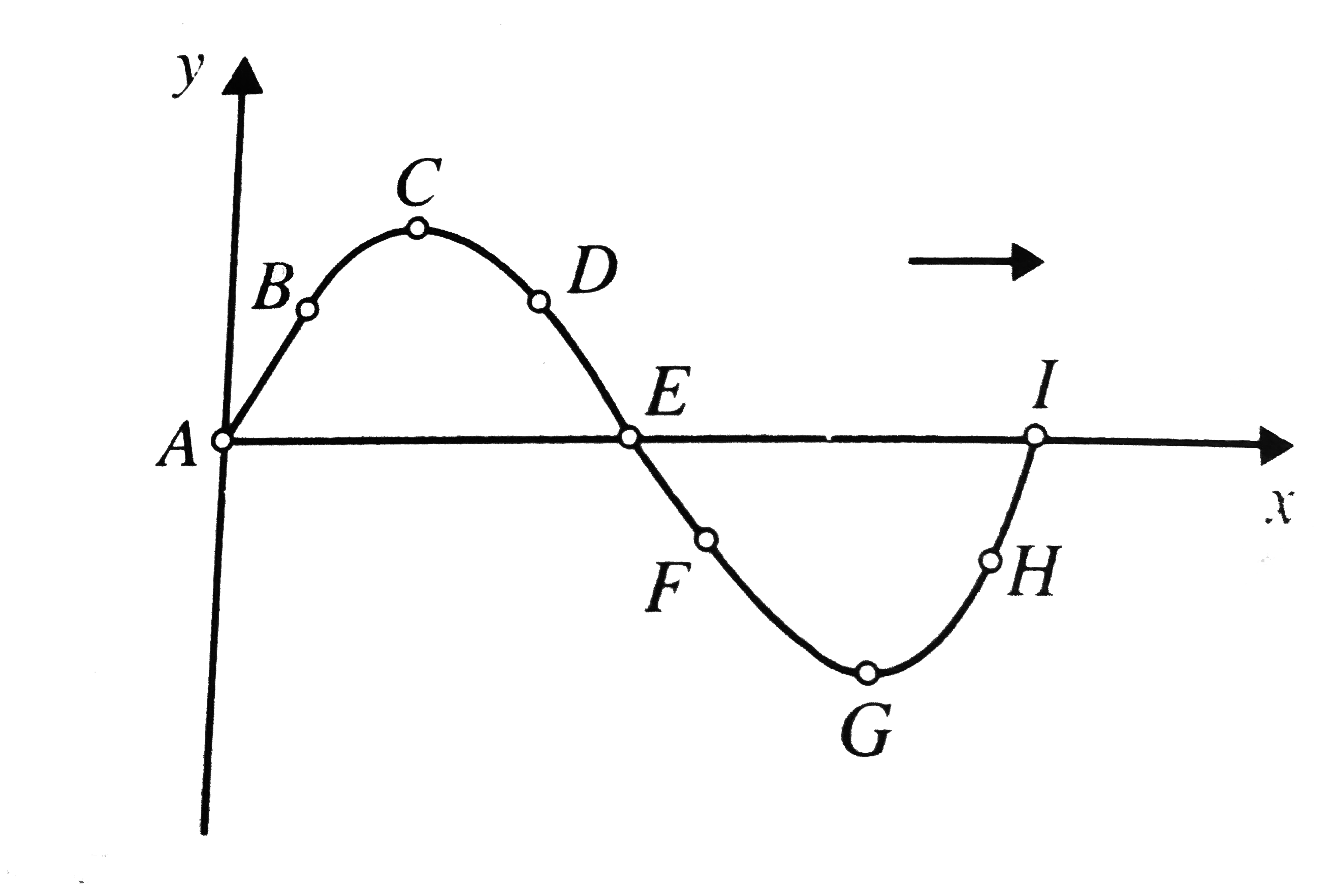
shows the photograph of the wave at an instant. Find
(a) the points moving upwards
(b) the points moving downwards
(c ) the points which have zero velocity
(d) the points which have maximum velocity
View SolutionDoes the wave function `y=A_(0) cos^(2)(2pi f_(0)t-2pix//lambda_(0)` represent a wave? If yes, the determine its amplitude frequency, and wavelength.
View SolutionDoes the equation
`y=+sqrt(16-(2x-t)^(2)`,
`(2x-t)lt4 or (2x-t)gt-4`,
=0,otherwise
represent a wave? If yes, then find the amplitude and the phase velocity.
View SolutionThe equation of a travelling wave is given by
y=+(b)/(a)sqrt(a^(2)-(x-ct)^(2)) where -altxlta`
=0,otherwise
Find the amplitude and the wave velocity fot the wave, what is the initial particle velocity at the position `x=a//2`?
View SolutionDoes a travelling wave in one dimension represented by a function of a linear combination of x and t,i.e., `y=f(ax+-bt)` represented a travelling wave?
View SolutionA wave is propagating along the length of a string taken as positive x-axis. The wave equation is given by
`y=Ae^((-t/t-x/A)^(2))`
where A=5mm, T=1.0 s and `lambda=8.0 cm`
(a) Find the velocity of the wave. (b) find the function f(t) represent the displacement of particle at x=0. (c ) Plot the function g(x) representing the shape of the string at t=0 (d) Plot the function g(x) of the string at t=0 and t=5 s
View SolutionEquation of a transverse wave travelling in a rope is given by
`y=5sin(4.0t-0.02 x)`
where y and x are expressed in cm and time in seconds. Calculate
(a) the amplitude, frequency,velocity and wavelength of the wave.
(b) the maximum transverse speed and acceleration of a particle in the rope.
View SolutionThe length of the wire shown in figure between the pulley is 1.5 m and its mass is 12.0 g. Find the frequency of vibration with which the wire vibrates in two loops leaving the middle point of the wire between the pulleys at rest.
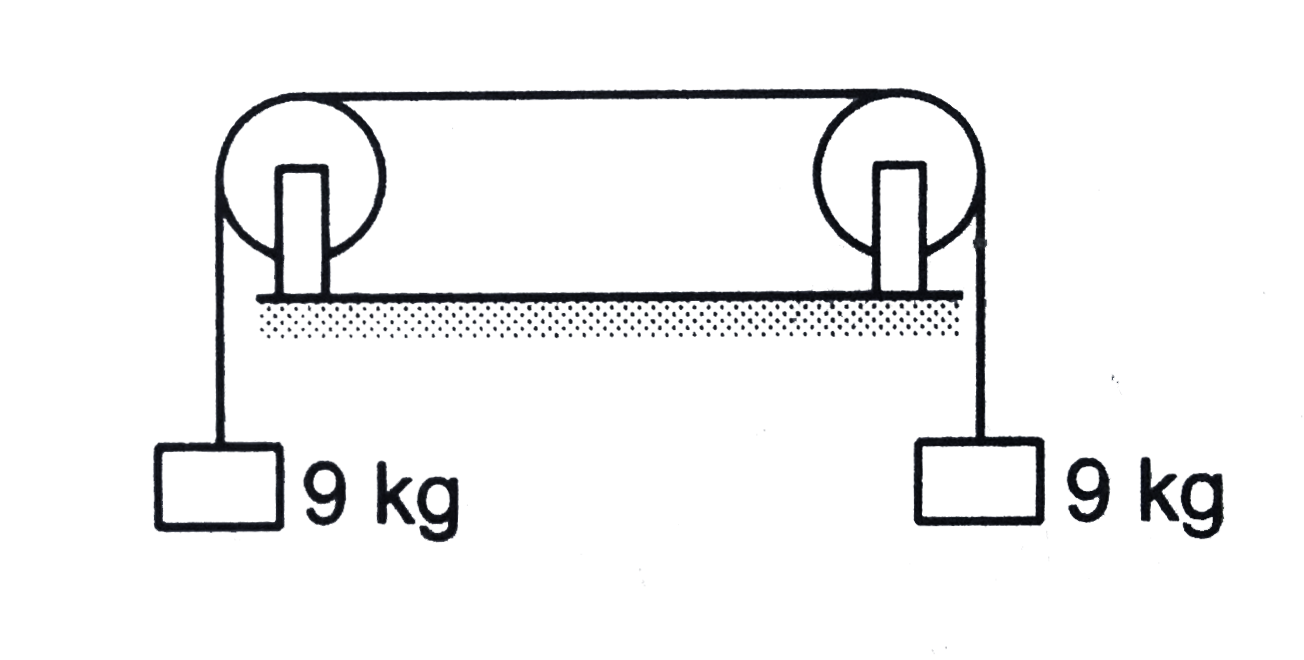
View SolutionThe following equation gives the displacement u at time t for a particle at a distance x:
`y=0.01 sin 500pi(t-x//30)`
where all are in SI units.
Find (i) the wavelength, (ii) the speed of the wave, (iii) the velocity amplitude of the particle of the medium and (iv) the accelration amplitude of the particle of the medium.
View SolutionThe equation of a travelling plane sound wave has the form `y=60 cos (1800t-5.3x)`, where y is in micrometres, t in seconds and x in metres. Find
(a). The ratio of the displacement amplitude with which the particle of the medium oscillate to the wavelength,
(b).the velocity oscillation ammplitude of particles of the medium and its ratio to the wave propagation velocity , (c). the particle acceleration amplitude.
View SolutionSpherical waves are emitted from a `1.0 W` source in an isotropic non-absorbing medium. What is the wave intensity `1.0 m` from the source?
View SolutionA wave travels out in all direction from a point source. Justify the expression `y=(a_(0)/r) sin k (r-vt)`, at a distance r from the source. Find the speed, periodicity and intensity of the wave. What are the dimensions of `a_(0)`?
View SolutionFor plane waves in the air of frequency 1000 Hz and the displace amplitude `2xx10^(-8)m`, deduce (i) the velocity amplitude, and (ii) the intensity. (Take p= 1.3 kg//m^(3),c=340 m//s)`
View SolutionA heavy uniform rope is held vertically and is tensioned by clamping it to a rigid support at the lower end. A wave of a certain frequency is set up at the lower end. Will the wave travel up the rope with the same speed?
View SolutionWhat is the phase difference between the particle 1 and 2 located as shown in
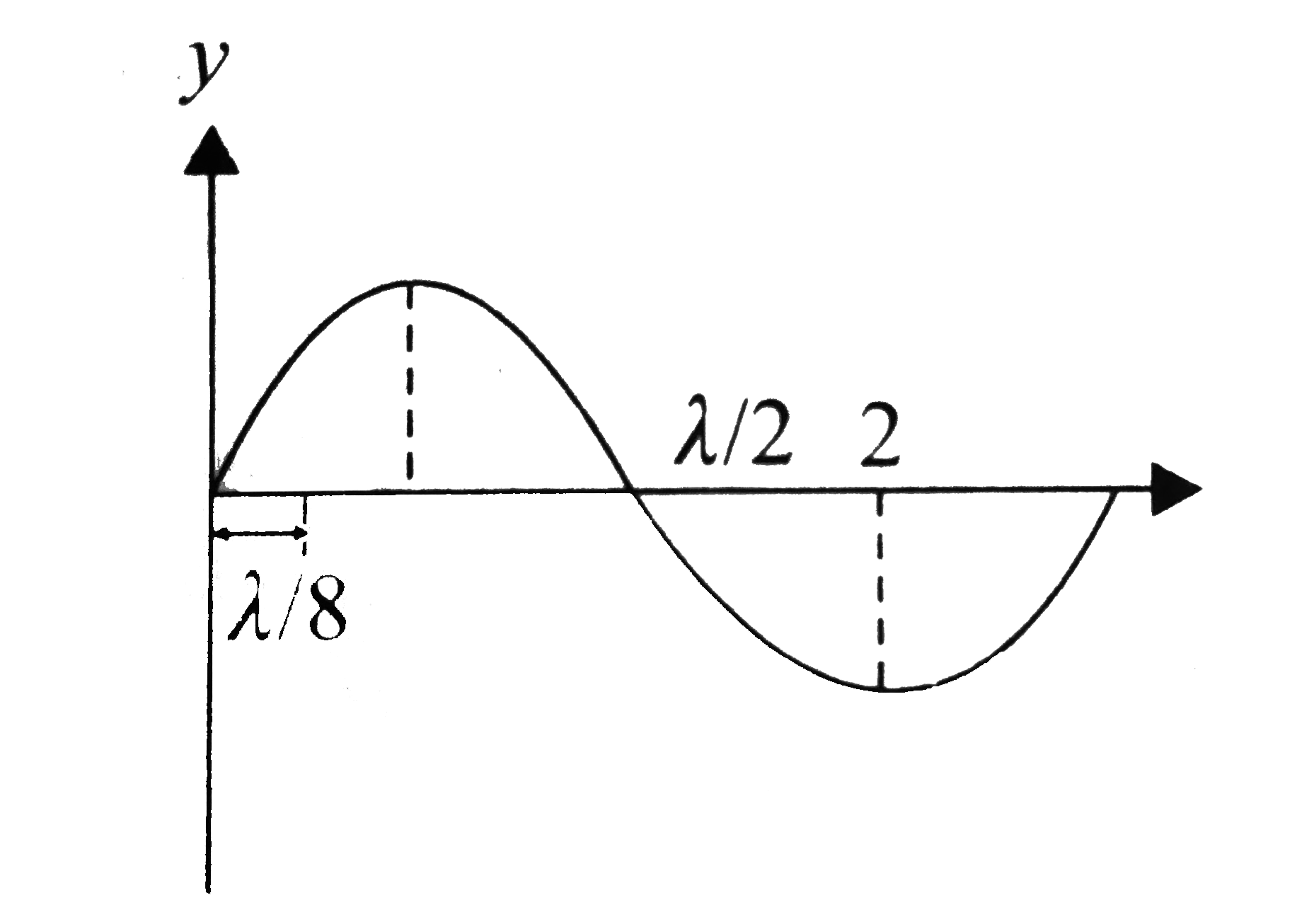
View SolutionShow that `(a)y=(x+vt)^(2),(b)y=(x+t)^(2),(c )y=(x-vt)^(2)`, and (d) y=2 sin xcos vt are each a solution of one dimensional wave equation but not (e) y=x^(2)-v^(2)t^(2)` and (f) `y=sin 2x cos vt.`
View SolutionFor a travelling harmonic wave `y=2.0 cos(10t-0.0080x+0.35)`, where x and y are in centimetres and t in seconds. What is the phase difference between oscillatory motion of two points separated by a distance of (a) 4cm (b) 0.5 cm (c ) `lambda//2` (d) `3lambda//4`
View SolutionThe
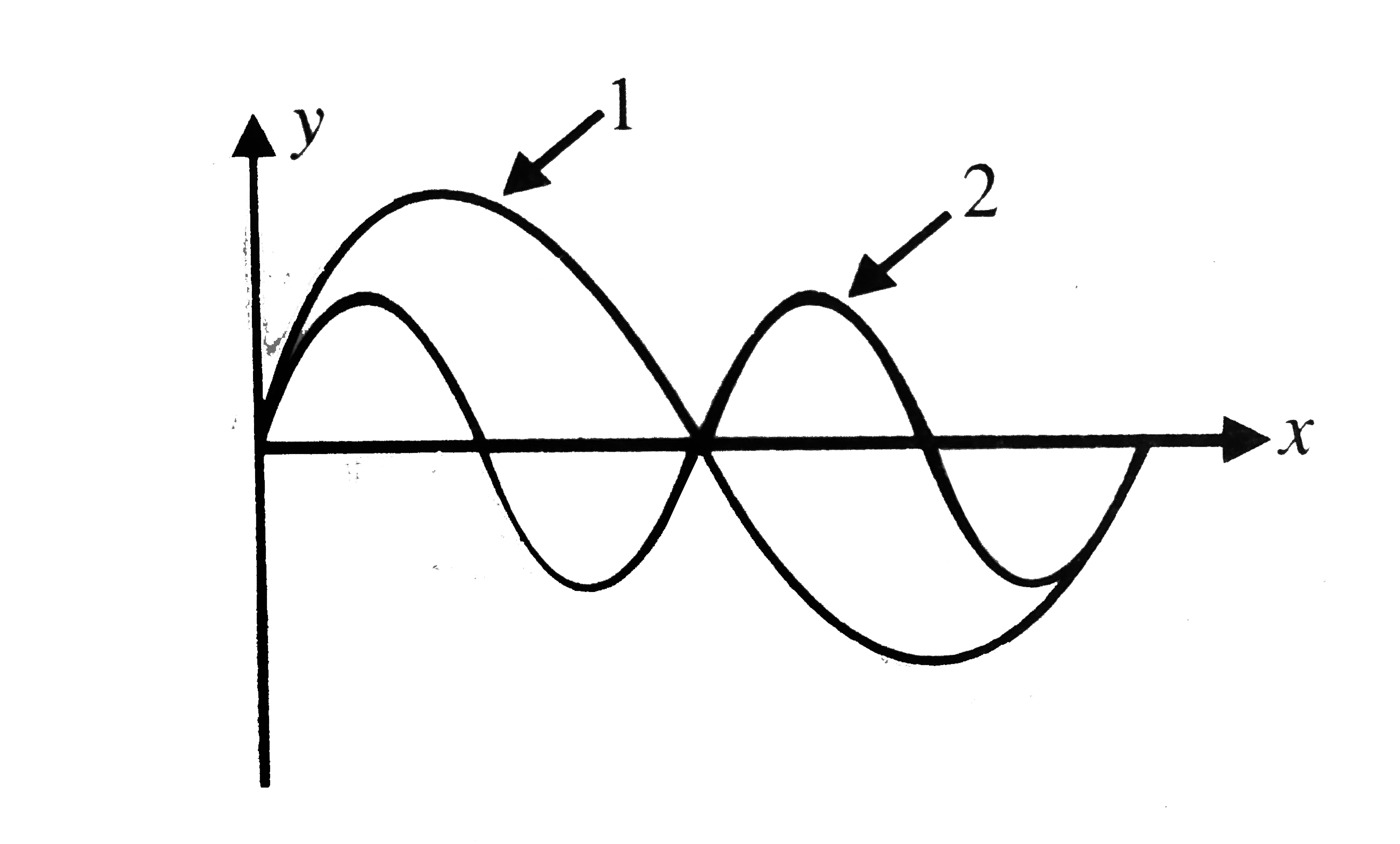
shows two snapshots, each of a wave travelling along a particular string. The phase for the waves are given by (a) 4x-8t (b) 8x-16t. Which phase corresponds to which waves in
View SolutionA circular loop of string rotates about its axis on a frictionless horizontal plane at a uniform rate so that the tangential speed of any particle of the string is v. if a small transvers disturbance is produced at a point of the loop,with what speed (relative to the string) will this disturbance travel on the string?
View SolutionA sinusoidal wave is propagating along a streched string that lies along the x-axis. The displacement of the string as a function of time is graphed in for particles at x-0 and at x=0.0900 m. (a) what is the amplitude of the wave? (b)what is the period of the wave? (c ) you are told that the two points x=0 and x=0.0900 m are within one wavelength of each other. if the wave is moving in the +x-direction, determine the wavelength and the wave speed. (d) if instead the wave is moving in the -x-direction, determine the wavelength and the wave speed. (e) would it be possible to derermine definitely the wavelength in parts (c ) and (d) if you were not told that the two points were within one wavelength of each other? why ot why not?
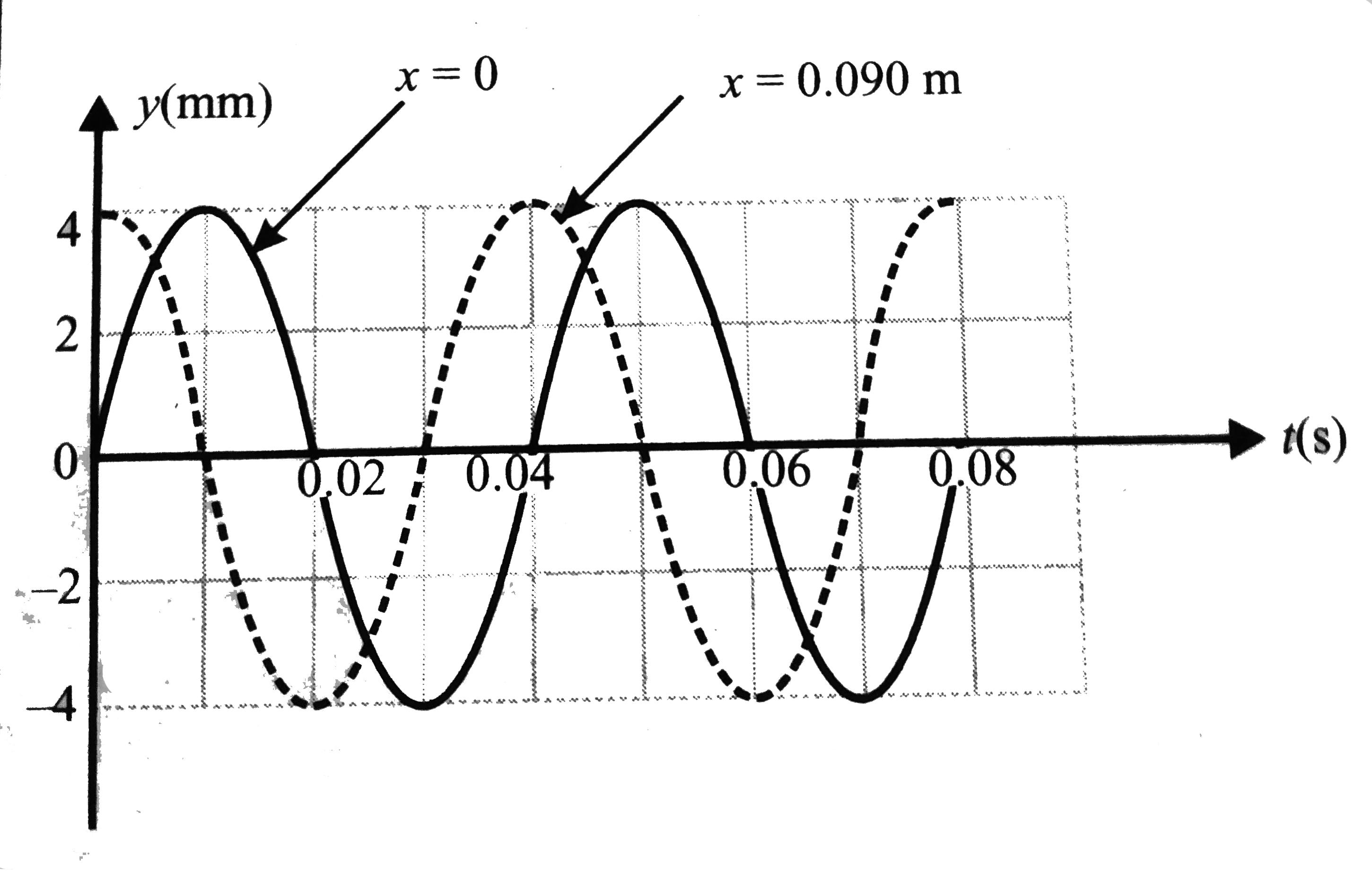
View SolutionA simple harmonic oscillator at the point x=0 genrates a wave on a rope. The oscillator operates at a frequency of 40.0 Hz and with an amplitude of 3.00 cm. the rope has a linear mass density of `50.0 g//m` and is strectches with a tension of 5.00 N. (a) determine the speed of the wave. (b) find the wavelength. (c ) write the wave function y(x,t) for the wave, Assume that the oscillator has its maximum upward displacement at time t=0. (d) find the maximum transverse acceleration at time t=0. (d) find the maximum transverse of points on the rope. (e) in the discussion of transverse waves in this chapter, the force of gravity was ignored. is that a reasonable assumption for this wave? explain.
View SolutionA piano wire with mass 3.00 g and length 80.0 cm is stretched with a tension of 25.0 N. A wave with frequency 120.0 Hz and amplitude 1.6 mm travels along the wire. (a) calculate the average power carried by the wave. (b) what happens to the average power if the wave amplitude is halved?
View SolutionA wave on a string is described by `y(x,t)=A cos (kx-omegat)`. (a) Graph `y,v_(y)`, and `a_(y)` as function of x for time t=0. (b) consider the following points on the string: (i) x=0,(ii) x=pi//4k, (iii) x=pi//2k, (iv)x=3pi//4k, (v)x=pi//k, (vi)x=5pi//4k, (vii) x=3pi//2k, (viii) x=7pi//4k`. For a particle at each of these points at t=0, describes in words whether the particle is moving and in what direction, and whether the particle is speeding up, slowing down, or instantaneously not acceleraring.
View Solution
Exercise 5.2 questions and complete solutions for chapter TRAVELLING WAVES of CENGAGE PHYSICS (HINGLISH) of Class 11